Lateral Collateral Ligament (LCL) Injury: Latest Details 2024
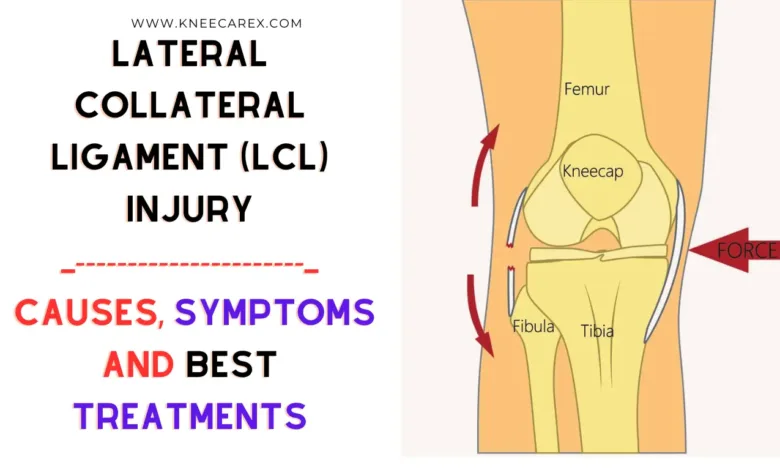
As athletes, weekend warriors, and even the average person go about their daily activities, one injury that often flies under the radar is the Lateral Collateral Ligament (LCL) injury. While much attention is given to more common sports injuries like ACL tears or hamstring strains, the LCL deserves its moment in the spotlight. This overlooked ligament plays a crucial role in stabilizing the knee joint and is prone to injury during sudden twists, impacts, or hyperextension of the knee. Understanding this lesser-known but significant injury is essential for anyone looking to maintain healthy knees and prevent long-term complications.
Contents
- 1 Understanding Lateral Collateral Ligament (LCL) Injury
- 2 Anatomy of the Knee: Importance of LCL
- 3 Causes of Lateral Collateral Ligament (LCL) Injuries
- 4 Identifying Symptoms and Early Signs of Injury
- 5 Diagnosis Procedures for LCL Injuries
- 6 Treatment Options: Non-Surgical and Surgical Methods
- 7 Rehabilitation and Recovery Process After LCL Injury
- 8 FAQ’s
- 8.1 How long does it take for lateral collateral ligament LCL to heal?
- 8.2 What are the 4 symptoms of an LCL injury?
- 8.3 Can an LCL tear heal on its own?
- 8.4 Is it OK to walk on a torn LCL?
- 8.5 What is the collateral ligament?
- 8.6 What are the signs of a collateral ligament injury?
- 8.7 What does collateral ligament pain feel like?
- 8.8 How long does it take for a collateral ligament to heal?
- 9 Conclusion: Lateral Collateral Ligament (LCL) Injury
Understanding Lateral Collateral Ligament (LCL) Injury
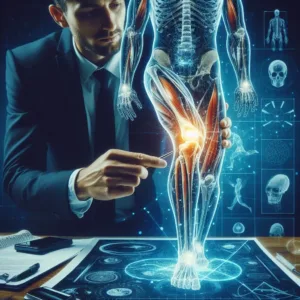
It’s important to note that an untreated LCL injury can lead to chronic instability and long-term complications, impacting daily activities and overall quality of life. This highlights the significance of early recognition and appropriate management. By shedding light on lesser-known aspects of knee injuries like LCL damage, we can empower individuals to pay attention to their body’s signals and seek timely medical intervention if they suspect any potential issue with their lateral collateral ligament.
Anatomy of the Knee: Importance of LCL
The lateral collateral ligament (LCL) is a critical component of the knee’s anatomy, yet it often goes unnoticed until an injury occurs. The LCL plays a vital role in providing stability to the knee joint, particularly in supporting side-to-side movements and preventing excessive outward rotation of the lower leg. Despite its relatively small size compared to other ligaments within the knee, such as the ACL or MCL, the LCL serves an essential purpose in maintaining the overall functionality and integrity of the joint.
When exploring the importance of the LCL, it’s crucial to recognize its role in promoting athletic performance and daily activities. Athletes relying on lateral movements, such as basketball players or soccer athletes, heavily depend on their LCL for agility and quick directional changes. Moreover, understanding the significance of this ligament sheds light on how injuries can impact mobility and functionality. By delving into the subtleties of LCL function and emphasizing its value in movement mechanics, individuals can develop a deeper appreciation for preserving knee health and minimizing potential risks associated with LCL injuries.
Causes of Lateral Collateral Ligament (LCL) Injuries
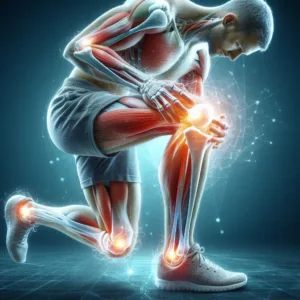
Furthermore, overuse and repetitive stress on the LCL can contribute to its weakening and eventual injury. This often occurs in athletes who engage in high-impact sports like soccer or basketball, where constant pivoting and quick lateral movements place continuous strain on the ligament. Inadequate conditioning and muscle imbalances around the knee joint may exacerbate this risk, highlighting the importance of proper strength training and movement mechanics in preventing LCL injuries.
Identifying Symptoms and Early Signs of Injury
Identifying symptoms and early signs of a lateral collateral ligament (LCL) injury is crucial for prompt diagnosis and effective treatment. One of the primary symptoms of an LCL injury is pain along the outside of the knee, especially when walking, bending, or putting pressure on the joint. Swelling and tenderness in the affected area are also common early signs to watch out for. Additionally, instability or a feeling that the knee may give way under pressure can indicate potential damage to the LCL.
It’s essential to pay attention to any changes in mobility and function in the knee as well. If you notice difficulty bearing weight on the affected leg or if you experience a limited range of motion, it could be indicative of an LCL injury. It’s important not to ignore these early signs and seek professional medical evaluation promptly to prevent further complications and facilitate effective rehabilitation. Early recognition of symptoms can lead to a better outcome as prompt treatment minimizes the potential long-term effects of an LCL injury.
Diagnosis Procedures for LCL Injuries
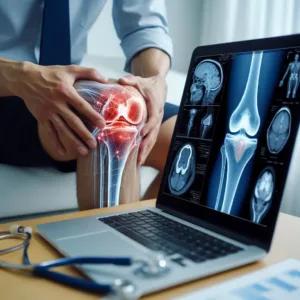
Best Radiologists for x-rays and ultrasounds near You
In some cases, advanced diagnostic procedures such as ultrasound may be utilized to evaluate LCL injuries further. Ultrasound imaging can provide real-time visualization of the ligament’s integrity and help pinpoint any abnormalities or tears. The combination of these diagnostic approaches enables healthcare professionals to formulate personalized treatment plans and determine whether surgical intervention is necessary for severe LCL injuries. By employing these cutting-edge diagnostic techniques, clinicians can accurately diagnose LCL injuries and facilitate targeted interventions that promote optimal recovery outcomes for patients.
Treatment Options: Non-Surgical and Surgical Methods
When it comes to treating Lateral Collateral Ligament (LCL) injuries, patients have a range of options to consider, including non-surgical and surgical methods.
Non-surgical treatment may involve rest, ice, compression, and physical therapy to help strengthen the surrounding muscles and improve stability in the knee joint. Additionally, bracing or taping techniques can be used to provide support and reduce stress on the injured ligament. While these non-surgical methods can be effective for mild LCL injuries, more severe cases might require surgical intervention.
Surgical Treatment for LCL injuries can include ligament reconstruction or repair procedures. During reconstructive surgery, a new graft is used to replace the damaged ligament to restore stability and function to the knee joint. On the other hand, repair surgery involves directly suturing or sewing together torn ligament fibers in cases where they are still intact enough to be mended. However, patients need to consult with an experienced orthopedic surgeon who can evaluate their specific injury and recommend the most suitable treatment approach based on factors such as severity of injury, activity level, and overall health.
Rehabilitation and Recovery Process After LCL Injury
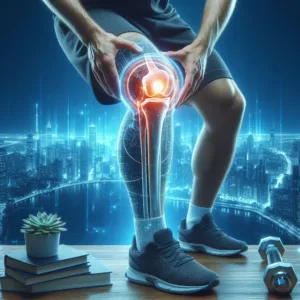
FAQ’s
How long does it take for lateral collateral ligament LCL to heal?
The healing time for a lateral collateral ligament (LCL) injury can vary significantly depending on the severity of the injury and the individual’s body’s ability to heal. In general, mild LCL injuries may take around 6-8 weeks to heal with proper rest, ice, compression, and elevation (R.I.C.E). However, more severe cases may require several months of rehabilitation and possibly surgical intervention. It’s important to note that every person’s healing process is unique, and it’s crucial to follow the guidance of a medical professional throughout the recovery journey.
What are the 4 symptoms of an LCL injury?
Lateral Collateral Ligament (LCL) injuries can present with a variety of symptoms, each indicative of the severity of the injury. The first common symptom is pain on the outside of the knee, often experienced when standing or walking. This pain can be accompanied by swelling around the affected area, as well as tenderness when touching the LCL region.
- Swelling in Knee.
- catching or Locking of your knee when you move your knee.
- Feeling Pain or Tenderness along the Knee’s Outside.
- A knee that gives way, or feels like it is going to give way, when it is active or stressed in a certain way
Can an LCL tear heal on its own?
An LCL tear, though painful and debilitating, has the potential to heal on its own in some cases. The body’s natural healing process may allow for the ligament to repair itself over time, especially when the tear is small or partial. However, it is essential to note that this healing process can be lengthy and may only sometimes result in a complete restoration of the ligament’s original strength and stability. Additionally, without proper care and rehabilitation, there is a risk of re-injury or chronic instability.
Is it OK to walk on a torn LCL?
It can be tempting to power through an injury, but when it comes to a torn LCL, walking on it may not be the best course of action. The Lateral Collateral Ligament provides stability to the knee joint, and walking on a torn LCL can exacerbate the damage and delay healing. While some individuals may have a high pain threshold and feel capable of walking on a torn LCL, doing so can lead to further complications and potentially prolong recovery time.
What is the collateral ligament?
The collateral ligaments are crucial structures that provide stability and support to the knee joint. The lateral collateral ligament (LCL), specifically, is located on the outer aspect of the knee and plays a significant role in preventing excessive sideways movement of the joint. Its robust composition allows it to withstand forces during activities such as running, jumping, and twisting movements.
What are the signs of a collateral ligament injury?
Recognizing the signs of a collateral ligament injury is crucial for timely treatment and recovery. One of the most common indicators is pain on the outside of the knee, particularly when putting weight on it or bending the knee. Additionally, swelling and tenderness around the affected area may be present, along with a feeling of instability in the knee joint. It’s important to note that these symptoms can vary in severity depending on the extent of the injury, so seeking professional evaluation is essential for accurate diagnosis.
What does collateral ligament pain feel like?
The sensation of collateral ligament pain can vary from person to person, but it’s often described as a sharp or stabbing pain on the outside of the knee. Many individuals report feeling a sense of instability in the knee joint, as though it might give way when bearing weight. Movements that involve bending or twisting the knee, such as running in a different direction or walking downward, can exacerbate the discomfort. Additionally, some people experience swelling and tenderness around the affected area, which further contributes to their discomfort.
How long does it take for a collateral ligament to heal?
The healing process for a collateral ligament injury can vary significantly depending on the severity of the damage. Minor sprains may take several weeks to heal, while more severe tears or ruptures can require months of recovery. Factors such as age, overall health, and specific treatment methods also play a role in determining the timeline for healing. Patients need to follow their healthcare provider’s guidance, which may include rest, physical therapy, bracing, and, in some cases, surgery.
Can You Run with a Torn Meniscus? Expert Insights and Recommendations
Conclusion: Lateral Collateral Ligament (LCL) Injury
In conclusion, To sum up, avoiding LCL injuries entails a mix of keeping up a general level of physical fitness, playing sports, or engaging in other activities that put stress on the knee joint with good technique and include knee-specific strength and flexibility exercises. These preventive measures are crucial for avoiding long-term implications such as chronic instability or osteoarthritis. When it comes to long-term care after an LCL injury, a comprehensive rehabilitation program focusing on strengthening the surrounding muscles and improving joint stability is essential. Additionally, regular monitoring by a healthcare professional can help in managing any potential complications and ensuring a successful recovery.



